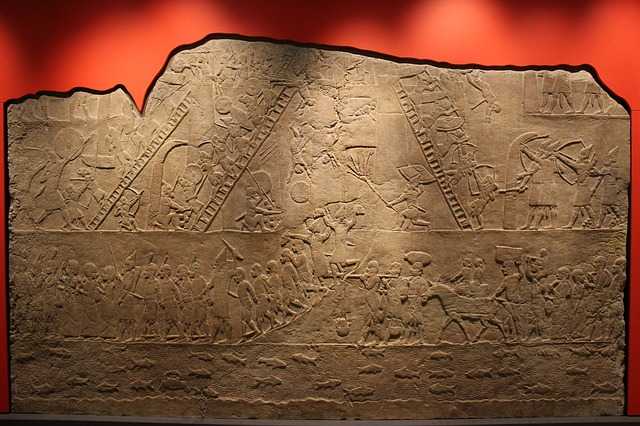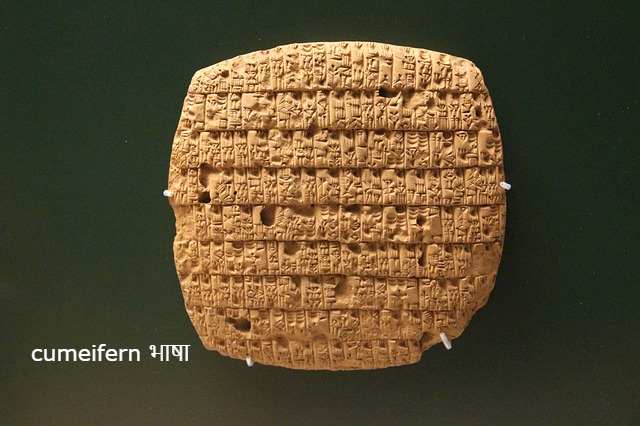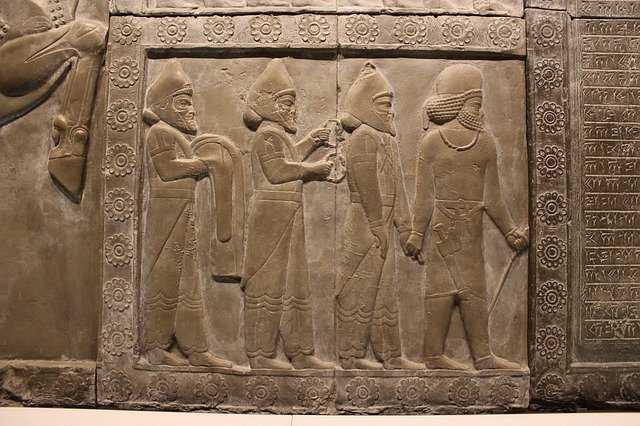मेसोपोटामिया का इतिहास हिंदी में – “ Click here“
History of Mesopotamia
To the north of the Gulf of Iran (Persia), which is modern Iraq. Historians named it Mesopotamia, which means (meaning) the land between rivers. History of Mesopotamia, (civilization of Sumer, Babylon, Assyria, Coldia). Development, when, how and who did it? In fact, two rivers coming from the north-west, the Euphrates (Tigris) and the Tigris (Eurat), fall from the Persian Gulf. But in ancient times, about 5 – 10 thousand years ago, these two rivers used to fall and there was a very long and wide space between these two rivers. This place between the mouths was called “Sumer” in ancient times. Civilizations of Mesopotamia (Civilization of Sumer, Babylon, Assyria, Caldea) in which the famous cities of ancient times Nipur, Ur, Eridu etc. were inhabited, at that time the water of the Persian Gulf was also spread higher than today. In these thousands of years, both the rivers bridged the sea with their soil and the border of the Persian Gulf also changed. In ancient times, in the north of Sumer, there was Akkad region, whose capital was Babylon, beyond that was the Assyria region, whose The capital was Asura. Sumer, Akkad and Assyria, these three regions are collectively called Mesopotamia. And the ancient civilizations of the three regions in chronological chronology are first Sumer, after Sumer, after Babylon, Assyria and then the second Babylonian empire of the people of the Keldia race is as follows. All this is considered to be the civilization of ancient Mesopotamia. In this, the empire period lasted for the last two and a half 3000 years.

When and how did Mesopotamia develop and who did it?
About 10 to 12 thousand years ago, from the west end of Spain to Italy in the Pacific Ocean, inscriptions were found, most of these inscriptions belong to the personal “article museum” of the people of that time. Development takes place in the valley of the Tigris and Euphrates rivers, Sumer and Babylonian civilization in the Nile valley, Egyptian civilization in the Indus river valley in India, Indus civilization. If there was no stone in Mesopotamia, then there was this type of soil which was cooked by the heat of the sun and became like a solid brick, in the valleys of these rivers there was a lot of grass, there was a means of irrigation for 12 months for the production of food.
Features of Mesopotamian Civilization
At the beginning of the Mesopotamian (Sumer, Babylonian, Assyria, Caldia) civilization, there were some small city-states. In the temples there were idols of deities with amazing appearance, this idol was either considered to be a deity himself. People used to consider these idols as the symbols of the deities. Civilization started with agriculture, their deity was the sun god, nature goddess. The whole life of the people was confined to deities, priests and temples. Mesopotamian civilization and state of organized state by about 6000 BC, thus built many big palaces, temples, gardens, roads, etc., for about 5 to 6 thousand years, increased trade, arts, skills, literature, the way of life of the common people. There it was to cultivate, to live among the poor and to pay the rent to the ruler, who were the artisan craftsmen. He used to build houses, palaces, temples for the emperors, priests and other people, used to make artistic objects of wood, metal, ivory, clay etc. to decorate them. Wheat, which used to be the cultivation of maize, was ground grain by hand Used to do And breads were cooked on brick stoves, dates and fruits were also produced, sheep and goats were reared, wool clothes were made. Cotton cloth came to India and silk cloth came from China, the most beautiful and rich art of these people was pottery which had beautiful police and painting, farming, dates, wool and pottery, these things were the basis of prosperity. Was. Women had a high position in the society.
Sumerian civilization
Sumerian civilization was developed by the Sumerians. which is lost today. Who were these Sumerian people, where did they have their origin?? These people were people from Aryan, Semitic, Mongol, Dnipro sub-castes only today, they did not have direct relation with these sub-castes. These Bhuria were the people of the deep Badami Brunet, who were spread from the Neolithic era from west Spain to the Pacific Ocean in the east in the Mediterranean coast, but some scholars are of the opinion that some people from Indus (India) have migrated to Mesopotamia from today. The Sumerian civilization was born about 7000 years ago. Mesopotamia was already inhabited by brown people of the Neolithic Age. In them, an organized civilization developed through contact with the Indus people. So who were these Indus people? These were the same people in whom the ancient Indus Mohenjodaro Harappan civilization developed. There is no doubt that the Indus civilization and Sumer Babylonian civilization are very similar. Sumerian civilization is the oldest civilization. Established the First Dynasty Empire in ancient Mesopotamia and due to its name it is also called the Sargomit period of the dynasty which lasted for about one and a half hundred years.
The era before the Babylonian period (3500-2600 BC) The time of the Sumerian civilization is considered to be 3500 years before BC. The ancient people of Sumer first told the village and then this village developed into a village and became a city. Remains of many cities have been found in which Nupur, Ninevah are prominent. In these cities, beautiful, shiny houses were built of baked bricks. Many types of beautiful clay pots and sculptures have been produced in this period, in the beginning the rule of each city was different, in fact these were small city states. There were kings in these cities, the priests of the temples were the only people who practiced witchcraft. Each city had a main deity, the religious leader and the city’s ruler was the same person. Development of Sumer Civilization- Canals came out of rivers and used to irrigate their fields, wheat and barley cultivation was the main one. His unique painting was the art of writing his pictures on small plates of clay, he used to cook the clay strips later, in this way his writings were kept safe. Their language was called cumeifern. In the end, King Purohit of the city of Erez made an empire by including the entire Sumer region. Which extended from the Persian Gulf to the western Mediterranean Sea. It was the first organized empire on earth.

Babylonian Civilization,
Babylon was a city in ancient Mesopotamia. All the cities of the region of Sumer were located, at the same time this Semitic tribes of the Arabian desert roamed here and there like wanderers, a chieftain of the Akkad caste of these castes whose name was (Sagran). Sumer attacked and he owns his kingdom. installed. Sagran, whose historical period is estimated to be (2750 BC), the Sumerian civilization was adopted by the conquerors of script, language, worship, etc. As soon as the kings of this dynasty became weak, the Semitic people attacked in this region from another caste and established a beautiful city named Babylon, and its empire is called Babylonian Empire. The famous king of this caste was Hammurbi. Which is estimated to have been around 2100 BC. The famous place in Babylonian history is where Alexander, the conqueror of the world, died. The swinging parts of Babylon, also known as the Garden of Semiramis. Seven Wonders of the World is one of the seven wonders. Babylonian development and law and order – During this period, there was a lot of progress in trade, organized rules and laws of governance, this was the first king in the history made by the emperor, who made laws related to governance and social behavior of personality. During this period, in addition to many letters from many big state buses, a long piece of stone was also found on which the laws of Hammurabi’s rule were written, some of the laws carved in stone were as follows-
- If a son beats his father, cut off his hand.
- Whoever breaks his eye, his eye should be blown out.
- Those who destroy canals should be punished severely.
This social system was very organized and developed, third (three) class people were in the society. Upper class – in which the priestly priest ruled the state employees. Middle class – consisting of merchants. Slave – in which agricultural laborers were servants. It is also estimated that the status of women was very high, women often used to do business also. Special attention was paid to trade, banking (transaction), agriculture, canals for irrigation and drains for cleanliness of cities, etc. After the death of Hammurabi, the empire was again disintegrated. By 1500 BC this empire had started to decline. The ancient Babylonian language also died out. The Babylonians adopted the writing skills of Sumeria to improve it. Metal pens were written on the clay plate. In this way the book was written, it was kept in the temples, a Mahakal of that period was found which is famous by the name “Gilgamish” Mahakal. In Babylon, mathematics was the science of astrology, history, medicine, which influenced the people of Syria, Arabia and Greece.
Assyrian Civilization
When the Babylonian Empire was ending, the Tigris, the Euphritis, was the main city of a new nation in the north of the valley of these two rivers. Asura Earlier there was a small town Asura. The inhabitants here learned from the Babylonian civilization, the art of writing, sculptor and other things of civilization, the Assyrian people conquered many parts from Syria, Israel, Judean and Egyptian Empire for some time and established a great Assyrian empire. The first emperor in the empire was Sagran II, whose reign (722–725) BC is believed to have destroyed the famous Babylonian city of Sagran’s son in about (705–651) BC. Then he built a new city whose name was Nineveh. Senakarib made this city the capital of the Assyrian Empire. He should keep all the documents found in his library.
In the palace built by the army close, religious, literary, scientific, articles of written period have been found on about three lakh clay plates. These plates are now preserved in the British Museum, London, thus the kingdom of Asurbanipal was the kingdom of Enlightenment. The revolts of the Assyrian rule continued to go against, similarly in 606 BC, the empire of the Assyrian people was ended by a race of Semitic people called Keldia (Khaldi) coming from the south. One such description comes in the ancient Bible (old testament), the ancient religious book of the Jewish people.

The Civilization of Keldia (Khald)
The greatest emperor of this empire was Nebuchadrazzar. Who rebuilt the old Babylonian city during the Assyrian Empire period and chose it as the capital of his empire. The reign of the emperor was (604-561 BC). By conquering all the neighboring tribes, this emperor subjugated the Jewish people of Judea from there, he took his capital to Babylon and settled them there. The emperor made the city of Babylon very beautiful and prosperous, built a very large and beautiful palace in the city. To please his wife, he also built the world famous Hanging Garden.
Hanging garden – The ancient Babylonians worshiped many gods and goddesses, built beautiful huge temples of the gods, in which great priests lived. Often the ruler or emperor was the chief priest. Babylonian emperor Nebuchadrazzar built a very large towerlike temple. This temple was very high. Beautifully flowering plants, trees and gardens were planted on the sides of each section, this swinging garden is one of the seven wonders of the ancient world. People had the knowledge of 12 zodiac signs – Marx, Venus, Mercury and Sunny etc.
Related Topic-
- What is Egyptian Civilization and Egyptian History – ” Click here”
- You can read more about Mesopotamia – “Click here“



